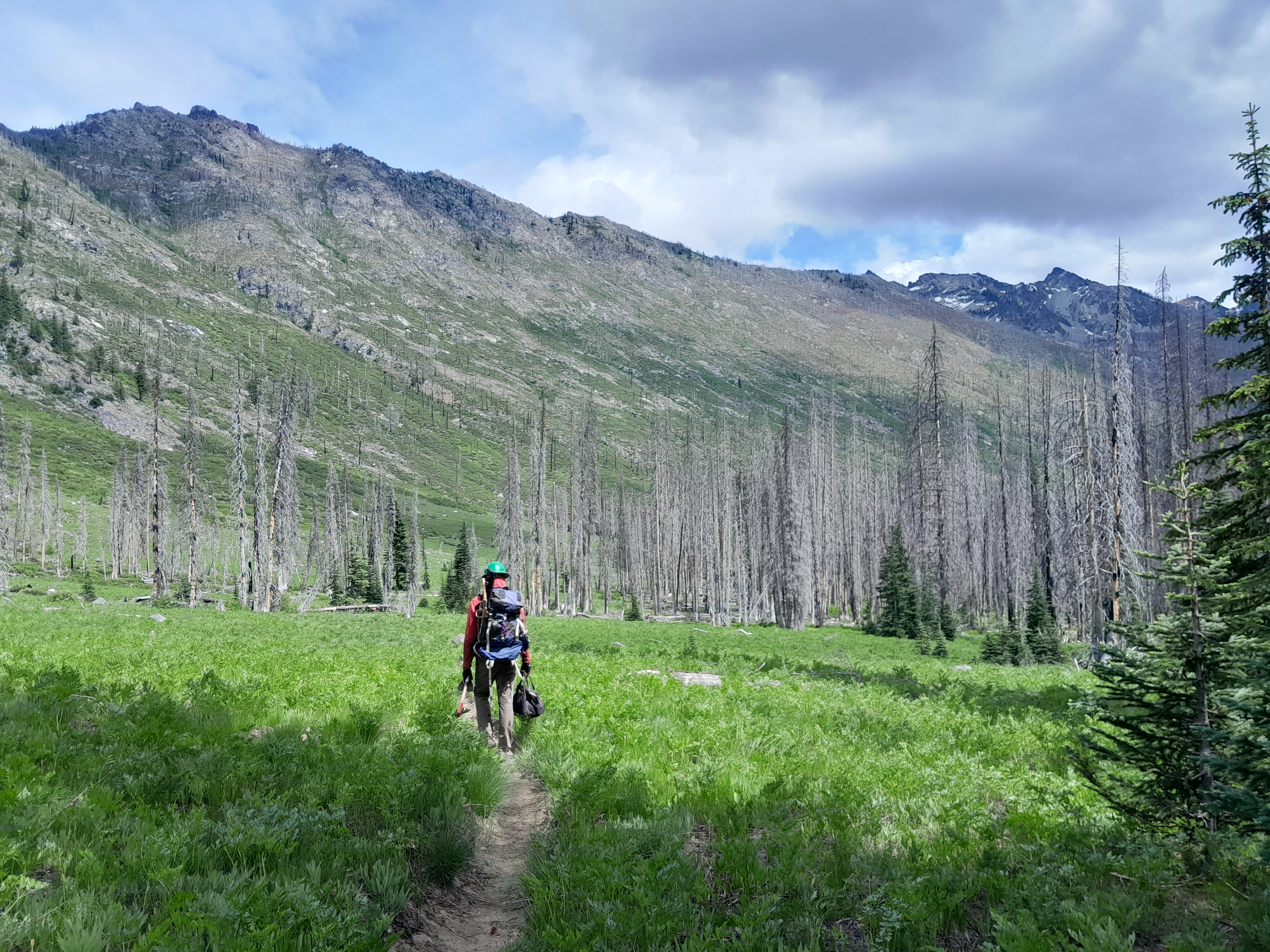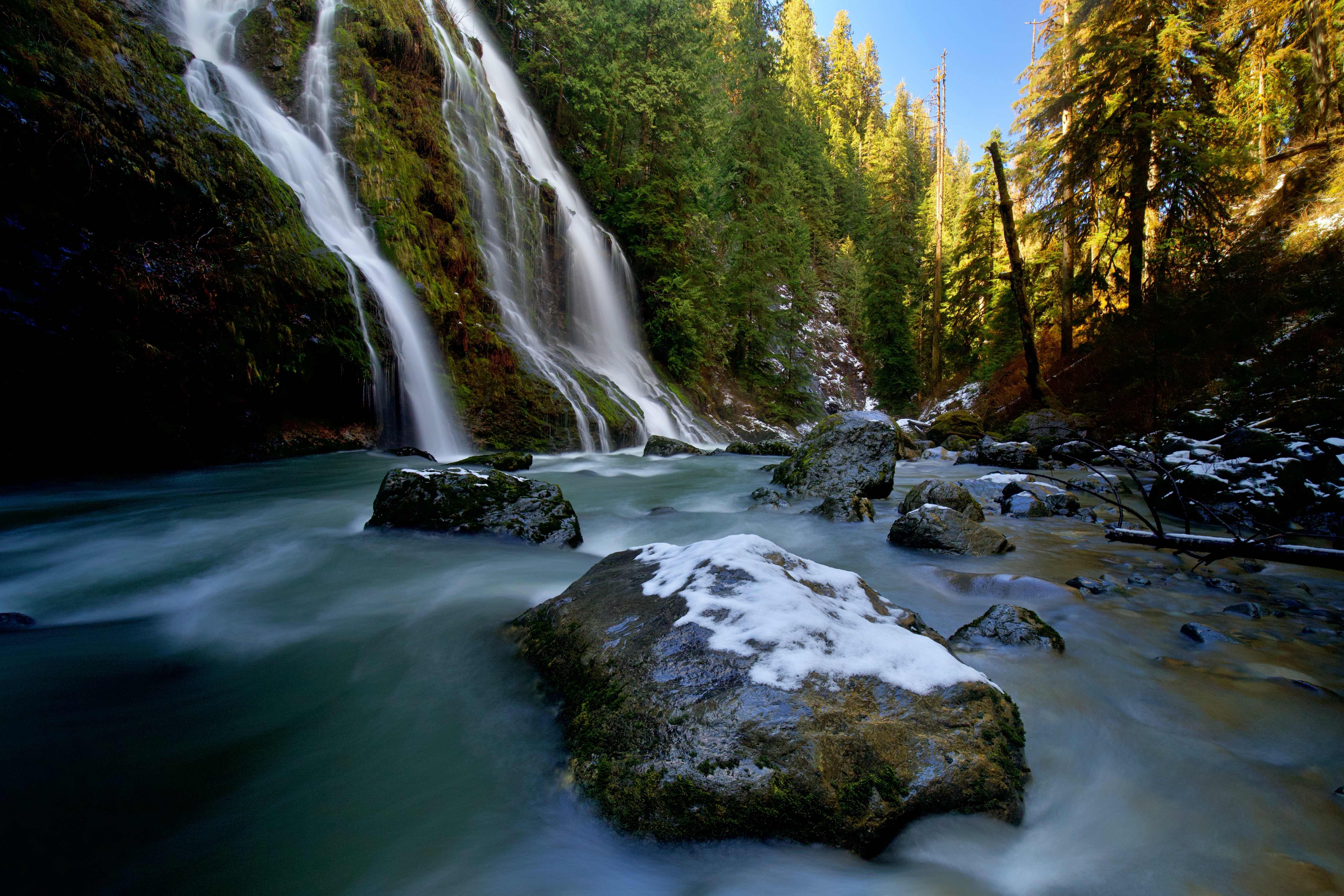Three proud moments in WTA’s work for wilderness areas
July 3, 2024 was the 40th anniversary of the Washington State Wilderness Act, which created 18 wilderness areas — and expanded 3 wilderness areas — in our state. WTA has been working in, and for, wilderness areas for decades.
July 3 2024 was the 40th anniversary of the Washington State Wilderness Act, which created 18 wilderness areas — and expanded 3 wilderness areas — in our state. For anyone who hiked in any of these unique and beautiful places, from the jaw-dropping Goat Rocks Wilderness to the remote reaches of the Pasayten Wilderness, the protections for Washington’s wilderness is something to celebrate!
Washington Trails Association has been working in, and for, wilderness areas for decades. We advocate with lawmakers to get these areas the funding they need, maintain trails that travel through them and restore access to these special landscapes when weather events and wildfires leave places un-hikable.
Here are three proud moments in WTA’s support of Washington’s wilderness areas.
trail maintenance tradition in Boulder River Wilderness
The Boulder River Trail that leads into Boulder River Wilderness was a favorite of Greg Ball, founder of WTA’s trail maintenance program. In the early years of our trail work parties more than 30 years ago, it was a tradition to remove logs that were blocking this trail every New Year’s Eve.
Photo of Boulder River by Vince Barnes.
After a landslide that devastated the community and lands near Oso in 2014, WTA repaired the Boulder River Trail to make it possible for hikers to visit the area as soon as road access was restored. Darrington and nearby communities count outdoor recreation as important to their economic recovery from the slide, and the Boulder River Trail is a key destination.
Though soggy New Year’s Eve work parties are no longer a tradition, work on the Boulder River Trail continues today. Our crews visit each year to repair any damage the trail has sustained during winter storms, keeping this family-friendly hike into wilderness open for all who wish to explore.
2016 Lost Trails Found in Salmo-Priest Wilderness
In 2015, WTA launched our Lost Trails Found campaign with the goal to restore backcountry trails in danger of being lost. The North Fork Sullivan Creek Trail, a few hours north of Spokane, was one of those trails. This trail offers chances to spot moose, climbs toward expansive views of the surrounding area and travels into Salmo-Priest Wilderness.
Photo of North Fork Sullivan Creek by Brett Hendricks.
A damaged bridge had essentially cut off access to this trail. WTA removed the unsafe bridge in 2016 so the Forest Service could reroute the trail around the wetlands. This new route was a more sustainable path for the trail and improved the longterm health of the wetland ecosystem. It also restored access to this section of the Salmo-Priest Wilderness.
Recovering lost trails like North Fork Sullivan Creek depends on funding from the federal government. That’s why WTA regularly visits Washington, D.C. to talk with Congressional leaders about getting the funding our trails and public lands need. Getting the required funding has allowed WTA crews to work on over 200 trails as part of our Lost Trails Found campaign.
2021 funding recovers fire-damaged areas in Glacier Peak Wilderness
The Entiat River Valley within Glacier Peak Wilderness is a backpacker’s dream. There are scores of trails to explore that branch off the main Entiat River Trail. A little more than 4.5 miles up the Entiat River Trail you'll reach the Glacier Peak Wilderness boundary. The 1984 Washington State Wilderness Act added land to this wilderness area, including upper areas that drain into the Entiat River like Larch Lake and Snow Brushy Creek.
 Photo of Entiat River Trail by Melissa Davis.
Photo of Entiat River Trail by Melissa Davis.
A 2015 wildfire left much of this area unreachable to the public. WTA began visiting in 2017 to restore access, and we returned year after year. Then, in 2020, we worked with hikers like you, partner agencies and members of Congress to pass the Great American Outdoors Act, a landmark piece of legislation in its level of funding for our nation’s public lands.
In 2021, Great American Outdoors Act funding enabled WTA to create our first paid backcountry crew. This all-staff crew had the flexibility to travel deeper into the backcountry, ramping up our efforts for lost trails. That year, our Lost Trails Found crew cleared 614 burnt fallen logs from trails in the Entiat River Valley, and completed similar projects in the Pasayten and Lake Chelan/Sawtooth Wilderness areas. Continuing to advocate with partners for federal and state funding for trails has allowed WTA to grow our paid crews to two crews in 2023 and three crews in 2024.
One of the places those crews have been working is in the William O. Douglass Wilderness. Federal funding, this time in the form of disaster relief, continued to expand our reach in the backcountry. During the summer of 2023, WTA signed an agreement with the Forest Service that put WTA crews to work in the William O. Douglas Wilderness, helping repair trails impacted by the Schneider Springs Fire, with work continuing into this summer. As we head into a future marked by more wildfires, federal funding and collaboration between government agencies and nonprofits like WTA will be key to the resilience of trail systems through wilderness areas.
Want to celebrate the anniversary of the Washington State Wilderness Act?
- Plan a hike in one of these special places.
- Sign up for a work party in a wilderness area.
- Join WTA’s Trail Action Network to speak up for the funding our public lands need.




Comments